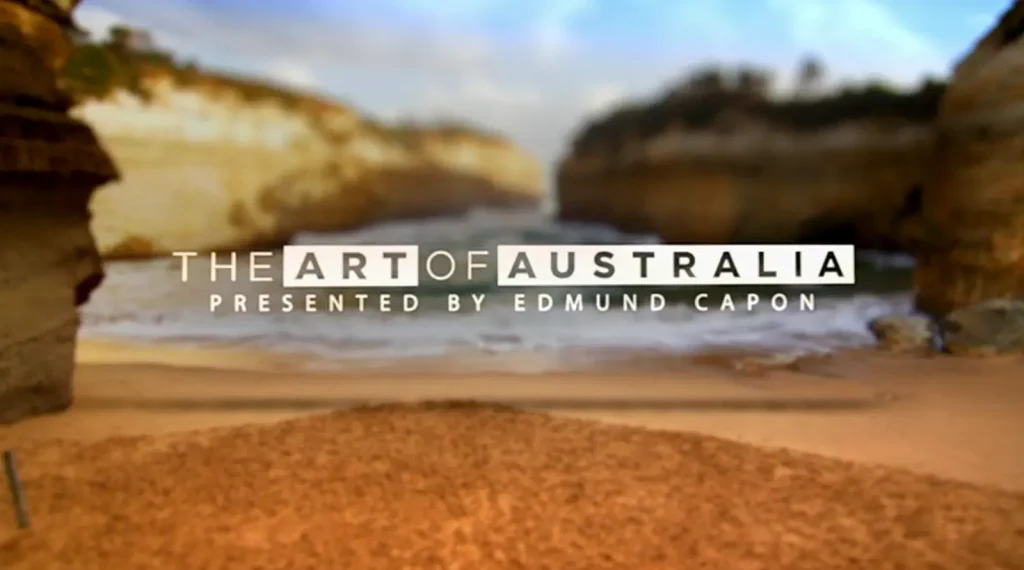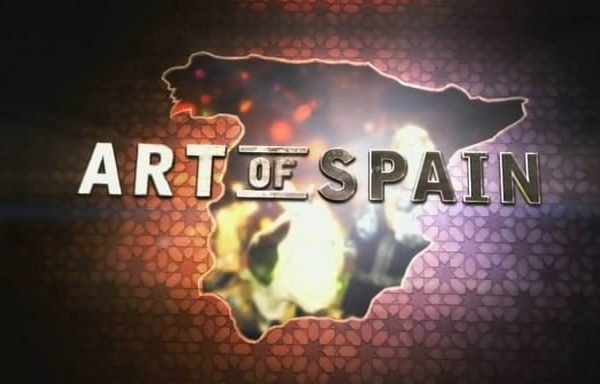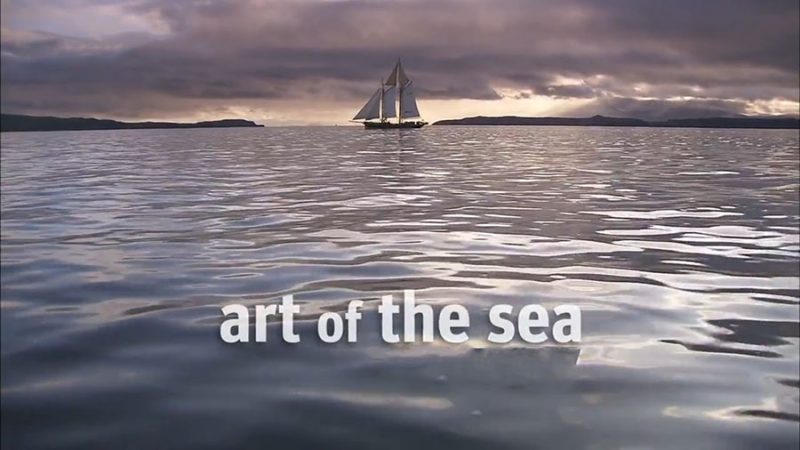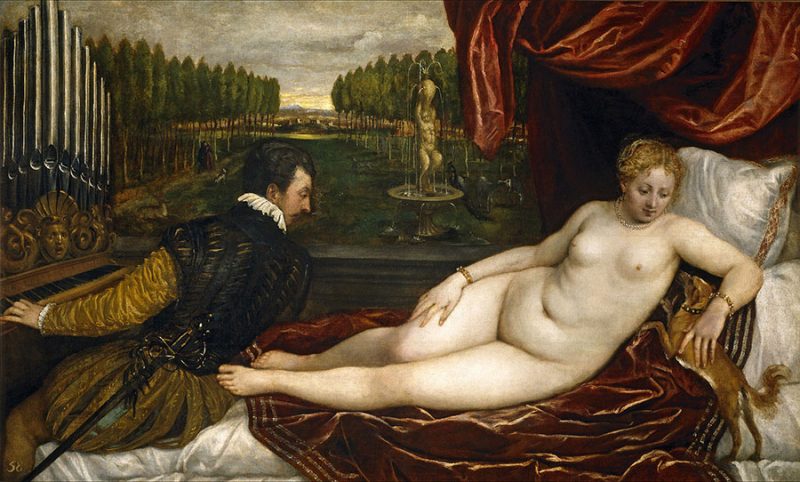The Art of Australia episode 2 – In the second episode of “The Art of Australia,” our host, Edmund, delves into the complex tapestry of Australian identity as it unfolded throughout the 20th century, a period marked by significant cultural shifts and evolving artistic expressions. This episode meticulously explores how modern art in Australia, often overshadowed by its European counterparts, carved a niche for itself against a backdrop of both conflict and harmony.
As the century progressed, Australian artists embarked on a quest to define a unique national identity through their work, navigating the challenges of establishing a modern art movement in a landscape traditionally dominated by European influences. This journey was not only about artistic innovation but also about crafting a narrative that reflected the diverse experiences and aspirations of the Australian people.
Central to this narrative were the giants of 20th-century Australian art—Sidney Nolan, Albert Tucker, and Arthur Boyd—whose contributions cannot be overstated. Through their groundbreaking work, they not only challenged prevailing artistic norms but also offered profound insights into the Australian psyche, grappling with themes of isolation, the harshness of the natural environment, and the complexities of human relationships within this unique context.
Sidney Nolan is perhaps best known for his iconic series of paintings on the theme of the outlaw Ned Kelly, encapsulating the rebel spirit and the stark, yet beautiful, Australian landscape. Nolan’s bold use of color and form, and his ability to weave narrative with visual art, make his work a cornerstone in the understanding of Australian identity.
The Art of Australia episode 2
Albert Tucker, on the other hand, offered a more introspective view of the Australian condition, particularly through his images of wartime and the subsequent impact on Australian society. His visceral, often haunting representations of human figures reflect the inner turmoil and existential anxieties of a nation coming to terms with its place in the modern world.
Arthur Boyd brought to the forefront the mystical and sometimes surreal aspects of Australian life, blending landscapes with human figures in a way that highlights the deep connection between the land and its people. Boyd’s paintings are imbued with a sense of the transcendent, suggesting a search for meaning beyond the immediate realities of everyday life.
This episode goes beyond mere biography and artistic analysis; it is an immersive journey into the heart of Australian artistry. Through expert commentary, stunning visuals, and thoughtful narration, Edmund guides viewers through the evolution of modern art in Australia, highlighting its struggles and triumphs. The narrative is enriched with historical context, providing insights into how global events, from the two World Wars to the cultural revolutions of the 60s and 70s, influenced Australian artists and their work.
Moreover, “The Art of Australia” Episode 2 does not shy away from discussing the controversies and criticisms that these artists faced, both from within their own borders and from the international art community. It examines the tension between the desire for an authentic Australian artistic voice and the pull of international art trends, offering a nuanced view of the creative processes and philosophical debates that shaped the art of the time.
As the episode concludes, viewers are left with a deep appreciation for the resilience and ingenuity of Australian artists who, despite obstacles, managed to forge a vibrant and distinctive art scene. Their legacy, as explored in this compelling documentary, is a testament to the power of art to reflect, challenge, and ultimately enrich our understanding of identity and place.
Through “The Art of Australia” Episode 2, Edmund has crafted a rich tapestry of stories, images, and ideas that capture the essence of 20th-century Australian art. It is an invitation to explore the depths of a nation’s soul, as expressed through the brushstrokes, colors, and visions of its most celebrated artists.
The Evolution of Australian Art: A Journey Through Time
Indigenous Australia
Ancient Roots and Regional Styles
Australian art holds a deeply rooted connection to its Indigenous cultures, with evidence of Aboriginal art dating back at least 30,000 years. This art form, recognized as the world’s oldest continuing tradition, spans across various mediums, including the renowned ancient rock artworks found throughout Australia. These artworks, notably present in national parks and UNESCO listed sites such as Uluru and Kakadu National Park, display a rich tapestry of Indigenous culture and spirituality. The diversity in styles—from the geometric patterns of Central Australia to the intricate figurative designs of Arnhem Land—highlights the deep spiritual significance and the rich storytelling traditions of Aboriginal Australians.
Influential Indigenous Artists
The legacy of Indigenous art is carried forward by artists like William Barak, who preserved traditional Aboriginal ways through his art, and Albert Namatjira, whose landscapes inspired the Hermannsburg School of art. The transition to using acrylic paints since the 1970s marked a significant evolution, with movements like the Western Desert Art Movement gaining international acclaim.
Early European Depictions
Natural History and the Shift in Perspective
The first European depictions of Australia were focused on the natural history illustrations by artists like Sydney Parkinson during James Cook’s 1770 voyage. These early works paved the way for a gradual shift in perspective, where artists began to adapt their styles to capture the unique Australian light and landscape, moving from European sensibilities to a distinct Australian aesthetic.
British Colonization (1788–1850)
Landscape and Ethnographic Portraiture
The early Western art in Australia evolved significantly during the British colonization period, with artists like John Glover capturing the Australian landscape’s unique features. This era also saw the emergence of ethnographic portraiture, documenting the indigenous peoples and contributing to the narrative of Australia’s diverse cultural landscape.
Gold Rushes and Expansion (1851–1885)
The Influence of the Victorian Gold Rush
The Victorian gold rush brought about a significant influx of settlers and wealth, which in turn influenced the art scene. Artists like S. T. Gill documented life on the goldfields, while others like Eugene von Guérard and Louis Buvelot focused on landscape painting, laying the groundwork for future Australian art movements.
Australian Impressionists (1885–1900)
The Heidelberg School
The late 19th century saw the rise of the Heidelberg School, with artists like Tom Roberts and Arthur Streeton pioneering an impressionistic plein air approach to the Australian landscape. This period marked the emergence of a distinctly Australian painting tradition, celebrating the beauty and majesty of Australia’s rural and outback scenes.
Federation Era (1901–1914)
Nationalist Landscapes and International Success
The federation of Australian colonies in 1901 heralded a new era in art, with artists like Hans Heysen and Elioth Gruner building upon the landscape tradition. This era also saw Australian artists achieving success on international stages, enriching the Australian art scene with global influences.
1920s Onwards
Modern Movements and Contemporary Art
From the 1920s, Australian art continued to evolve, embracing modernist movements and exploring contemporary themes. The mid-20th century saw a renewed interest in the Outback, with artists like Sidney Nolan and Albert Tucker capturing the stark beauty and ancient mystique of Australia’s interior landscapes.
FAQ The Art of Australia episode 2
What are the major regional styles of Indigenous Australian art?
Indigenous Australian art is characterized by three major regional styles: the geometric patterns prevalent in Central Australia, Tasmania, the Kimberley, and Victoria; the simple figurative style found in Queensland; and the complex figurative style of Arnhem Land, which includes X-Ray art.
Who were the key figures in the Heidelberg School, and what was their contribution to Australian art?
The Heidelberg School included key figures such as Tom Roberts, Arthur Streeton, and Frederick McCubbin. They are credited with establishing a distinctly Australian tradition of art by adopting an impressionistic approach to painting, which celebrated the unique light and landscapes of Australia.
How did the Victorian gold rush impact Australian art?
The Victorian gold rush led to a surge in wealth and population, which in turn influenced the art market. Artists like S. T. Gill documented life on the goldfields, while the demand for landscape paintings grew, leading to the commissioning of works that reflected the material success of the time.
Conclusion The Art of Australia episode 2
In the captivating second episode of “The Art of Australia,” we are taken on a profound journey through the evolution of Australian art during the 20th century, a period of significant cultural and artistic transformation. Host Edmund masterfully guides us through the intricacies of how Australian artists sought to define their national identity against the backdrop of global influences and local challenges. Through the lens of key figures like Sidney Nolan, Albert Tucker, and Arthur Boyd, we explore the themes of isolation, connection to the land, and the search for an authentic Australian voice in art.
The episode does not merely recount the history of Australian art; it immerses us in the struggles, innovations, and achievements of artists who dared to challenge the status quo. By highlighting the intersection of art with historical events, cultural shifts, and personal narratives, “The Art of Australia” offers a comprehensive and nuanced understanding of how art reflects and shapes national identity.
As the episode concludes, it leaves us with a lasting impression of the resilience, creativity, and vision of Australian artists. Their contributions have not only enriched the global art scene but have also offered valuable insights into the Australian spirit. This episode serves as a testament to the power of art in capturing the essence of a nation’s journey through time, inviting viewers to appreciate the depth and diversity of Australian artistry.
Ultimately, “The Art of Australia” Episode 2 stands as an invitation to explore the rich tapestry of Australian art, encouraging a deeper engagement with the stories and landscapes that have shaped this vibrant artistic tradition. It is a compelling narrative that celebrates the enduring legacy of Australian artists and their ongoing influence on the cultural fabric of the nation.




